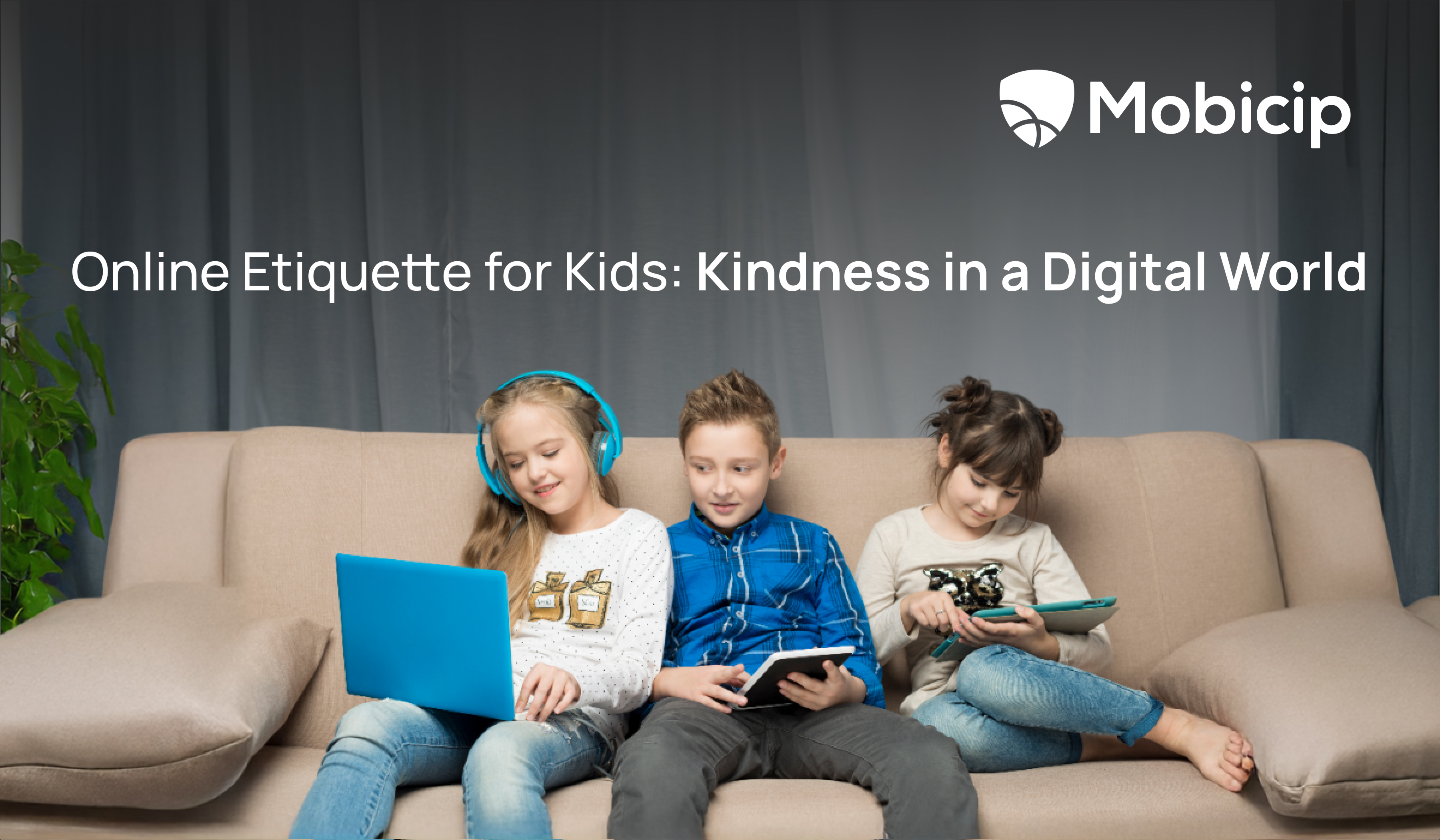Online Grooming & Platform Accountability: What Needs to Change

Online grooming—where predators manipulate children through digital platforms—has become a growing threat, raising urgent questions about the accountability of the very platforms that enable this abuse. This conversation is both timely and critical, especially in light of the following alarming statistics.
- Approximately 500,000 online predators are active daily.
- Children aged 12 to 15 are most vulnerable; over half of online sexual exploitation victims fall in this group (FBI data).
- Even children aged 8 to 11 are at risk, with 40% admitting to removing privacy settings to gain followers.
Raising public awareness about online grooming and platform responsibility empowers parents, educators, and children with the knowledge and tools needed to identify and respond to potential threats effectively. Proactive protection measures, such as robust monitoring and safety tools, are essential to prevent predators from exploiting vulnerable users. Although social media companies are not legally responsible for user-generated content, they hold a moral and operational duty to moderate, rank, and filter content to prioritize the safety of all users, especially children. The UN Guiding Principles on Business and Human Rights emphasize that platforms must implement tangible, measurable actions to minimize harm and protect vulnerable individuals online. platforms must take real, measurable steps to reduce harm.
This article explores the rise of online grooming, the gaps in platform accountability, and how tools like Mobicip can help parents keep their children safe in the digital world.
Understanding Online Grooming
At its core, online grooming is about breaking down a child’s sense of what’s normal, safe, or acceptable, and replacing it with secrecy, fear, and dependency. While grooming itself is not new, the internet has made it far easier for predators to find, contact, and manipulate children. Social media, gaming platforms, messaging apps, and even educational tools can all become venues for abuse—because predators go wherever children are.
One reason online grooming is so dangerous is its invisibility. There’s often no immediate red flag. Conversations may start out innocently—talking about shared hobbies or complimenting the child’s skills in a game. But over time, predators slowly escalate the relationship, pushing boundaries while ensuring the child feels complicit, confused, or afraid to tell an adult. And because grooming can happen across so many platforms and in so many forms, it’s challenging for parents to monitor and even harder for children to identify.
How Predators Use Various Online Platforms to Groom Children
Online predators adapt to the platforms children use most:
- Social Media: Predators create fake profiles to follow, like, and message kids, gradually building rapport.
- Gaming Platforms: Through multiplayer games and chat features, predators pose as peers, often introducing private chats or moving the conversation to messaging apps.
- Messaging Apps: Apps like WhatsApp, Snapchat, and Discord allow encrypted, often disappearing messages, making it easier for predators to escalate conversations and isolate children.
- Live Streaming/Video Chat: Predators may encourage kids to turn on their cameras under the guise of friendship, dares, or challenges.
The Psychological Tactics Used in Online Grooming
Groomers rely on calculated psychological manipulation to gain control:
- Flattery and Attention: They make children feel special and understood.
- Mirroring Interests: They pretend to like the same things—music, games, hobbies.
- Gradual Desensitization: They slowly introduce inappropriate topics or images to normalize them.
- Isolation: Predators may turn children against their parents or friends, claiming “they won’t understand.”
- Threats and Guilt: They use fear or shame—e.g., “You’ll get in trouble if you tell,” or “We’ll both go to jail.”
Real-Life Examples of Online Grooming
There are many real-life cases where victims of online grooming have courageously come forward to share their experiences. By speaking out, these individuals aim to inform and warn other children, teenagers, and parents about the risks lurking in online spaces. Their stories shed light on how grooming can happen anywhere—through games, social media, or chat platforms—and emphasize the importance of vigilance and open communication.
For example, one young girl, despite careful parental controls and family supervision, was groomed through an online video game. The predator pretended to be another child, slowly gaining her trust. Over time, the girl became withdrawn and anxious but stayed silent out of fear and shame. Eventually, she found the courage to tell a trusted adult, which marked the beginning of her recovery.
In another case, a 13-year-old girl curious about social media engaged with adults on chat sites. These adults manipulated her into sharing intimate images, trapping her in a painful cycle of guilt and fear. Positive offline support helped her break free and heal.
The Role of Digital Platforms
Social media and online gaming platforms have become common spaces where online grooming occurs. Popular apps and games provide easy access to children and teens, allowing predators to initiate contact, build trust, and manipulate young users. The interactive, real-time nature of these platforms combined with their widespread use among youth makes them especially vulnerable.
Privacy Features That Make Detection Difficult
Many digital platforms include privacy features designed to protect users but which can also unintentionally aid predators:
- End-to-end encryption prevents platforms from monitoring private messages.
- Disappearing or temporary messages erase content quickly, limiting evidence.
- Private profiles and direct messaging restrict visibility, making it harder for parents or moderators to detect grooming.
- Lack of robust age verification allows predators to pose as peers or younger users.
Platform Policies and Their Effectiveness
| Platform Type | Key Policies | Effectiveness | Challenges |
| Social Media | Reporting tools, content filters | Moderate — large user base | High volume of content, fake accounts |
| Gaming Platforms | Moderation, chat filters | Variable — depends on platform | Voice chat and in-game messaging hard to monitor |
| Messaging Apps | Encryption, abuse reporting | Limited — encrypted messages | Limited proactive detection |
Legal Framework & Regulations
Digital platforms must not only comply with legal frameworks but also take proactive steps to protect children’s rights.
Responsibilities
Platforms should designate specific teams or individuals responsible for child safety, empowered to coordinate internal efforts and engage with external stakeholders. Developing clear child protection policies and integrating children’s rights into broader corporate commitments ensures that risks are managed consistently. Due diligence processes must assess potential harms linked to products or services, taking into account the different needs of children by age group.
Platforms must also provide accessible reporting and grievance mechanisms to address violations like child sexual abuse material (CSAM) or inappropriate contact. Collaboration with law enforcement, civil society, and international hotlines (such as INHOPE) enhances the detection and removal of harmful content, especially in regions with weaker regulatory oversight.
Technical and Policy Measures
Digital platforms employ technical tools like age verification, parental controls, content filtering, and moderation to create safer environments. These tools balance child protection with respecting children’s rights to expression and information access. Platforms should communicate clear, user-friendly rules about acceptable behavior and consequences, targeting both young users and their caregivers.
Global Legislation on Online Grooming
Laws worldwide are evolving to combat online grooming and protect children. The UK’s Online Safety Act mandates stronger safeguards to reduce harmful content and hold platforms accountable for user safety. In the United States, the Children’s Online Privacy Protection Act (COPPA) limits the collection of personal data from children under 13, aiming to reduce their exposure to online risks. Many countries have also criminalized grooming specifically, with legal frameworks imposing strict penalties to deter offenders.
The Need for Stronger Platform Accountability
With the increasing use of artificial intelligence (AI) in social media and gaming platforms, content moderation and user interactions are often driven by algorithms designed to maximize engagement. While AI can efficiently filter harmful content, it can also unintentionally create “algorithmic loops” where certain types of content—sometimes risky or harmful—are amplified because they generate more clicks or interactions. This snowballing effect makes it easier for predators to reach vulnerable users, increasing the risks of online grooming and other abuses. As a result, stronger platform accountability is essential to ensure these algorithms do not harm children and young users.
Balancing algorithmic moderation with human oversight is critical:
- Algorithmic moderation quickly scans vast amounts of content to detect obvious threats but may miss nuanced or emerging risks.
- Human moderators provide context-sensitive decisions but cannot scale to monitor all activity.
Platforms must combine these approaches to improve safety effectively. To increase accountability, companies should:
- Assign dedicated child safety teams empowered to enforce policies.
- Be transparent about moderation practices and outcomes.
- Work closely with regulators, experts, and communities to continually refine safety measures.
This multi-layered responsibility is key to fostering safer digital spaces for children.
Highlight Mobicip’s role in promoting safer digital spaces.
Solutions & Preventative Measures
Online grooming and other risks on digital platforms call for strong, multi-pronged solutions involving technology, education, and family engagement.
Advocate for Stricter Content Moderation and Age Verification
Platforms must implement more rigorous content moderation using both AI tools and human oversight to identify and remove harmful content quickly. Stronger age verification mechanisms can prevent underage users from accessing inappropriate spaces or content. These measures reduce opportunities for predators to contact children.
Legal Recognition and Criminalization of Online Grooming
Online grooming presents unique challenges that require specific legal attention beyond general child sexual exploitation laws. To protect children effectively, legislation must explicitly criminalize the grooming process itself, addressing its digital nature and potential harms.
- Incorporate grooming and online grooming offenses explicitly into the penal code.
- Ensure laws include specific provisions and penalties for ICT-facilitated grooming.
- Recognize online grooming as a standalone offense, not just preparatory to other crimes.
- Address the continuous, anonymous, and simultaneous nature of online grooming.
- Criminalize grooming regardless of whether the offender intends or manages to meet the child.
- Provide clear definitions to support effective enforcement and prosecution.
- Update legislation to reflect the harm caused by non-contact online grooming behaviors.
Encourage the use of Parental Controls
Parents play a vital role in protecting children online. Tools like Mobicip provide comprehensive parental controls designed specifically to shield kids from grooming and other dangers. Mobicip offers:
- Web filtering to block inappropriate sites
- App management to control which apps children can use
- Screen time limits to reduce excessive online exposure
- Location tracking for real-time safety monitoring
- Social media monitoring to alert parents about risky behavior
- Detailed activity reports to keep parents informed
Such features empower parents to guide their children’s safe digital experience without invading their privacy.
Promote Education and Awareness Programs
Schools, communities, and digital platforms should collaborate to educate children, parents, and caregivers about online risks, privacy, and responsible internet use. Awareness campaigns help children recognize grooming tactics and know how to seek help.
Open Communication
Encouraging honest conversations between parents and children about their online experiences fosters trust. Children who feel safe discussing concerns are less likely to fall victim to grooming.
Establishing Balance by Example
Adults should model positive digital behavior. Children learn by observing, so demonstrating respectful and responsible use of technology sets a powerful example that children are likely to follow.

Conclusion
As digital environments continue to change, so do the methods predators use to exploit children online. Addressing this ongoing challenge requires coordinated efforts from platforms, lawmakers, educators, parents, and children. Technology alone cannot provide full protection; building digital resilience through education and open communication is equally important. Platforms must increase transparency and accountability by improving algorithms and safety policies to better protect young users. Legal frameworks need to keep pace with evolving threats by explicitly criminalizing the specific nature of online grooming. Ultimately, creating safer online spaces depends on a balance of prevention, empowerment, and vigilance—allowing children to explore and connect without fear. By combining innovative technology, informed parenting, and proactive governance, we can better protect vulnerable users and ensure every child’s right to a secure digital experience.





